TL783 Adjustable Regulator : Pinout, Price and Datasheet
Adjustable 2.54mm PMIC 3 TO-220
TL783 is a high-voltage adjustable regulator. This article mainly introduce its pinout, price, datasheet and other detailed information about Texas Instruments TL783.

TL783 DIY High Voltage Regulated Power Supply
TL783 Description
The IC TL783 is a 3 terminal high voltage adjustable regulator that can be used for getting a continuously variable output between 1.25 V to 125 V DC.
The device has an in-built DMOS MOSFET which enables the user to obtain a decent current at around 700 mA for the entire voltage range.
It is designed for use in high-voltage applications where standard bipolar regulators cannot be used. In these applications, other typical voltage regulator such as LM338 etc seem greatly ineffective.
The IC TL783 is extremely good with its high voltage regulation feature due to its state-of-the-art technology that includes standard bipolar circuitry along with a special high-voltage double diffused MOSFET output stage. With these advanced layouts the device is able to ideally adapt to voltages at much higher levels which other BJT based designs simply fail.
Due to the elimination of secondary-breakdown and thermal-runaway characteristics, which are normally a part of typical BJT based outputs, the TL783 is able to execute an optimal overload protection even while working with potentials up to 125 V input-output differential.
The device is further packed with many outstanding features such as over-current limiting, safe-operating-area (SOA) protection, and thermal shutdown.
The above mentioned protection features remain active even in a situation where the ADJ pin of the IC is accidentally left open.
TL783 Pinout


TL783 CAD Model
Footprint
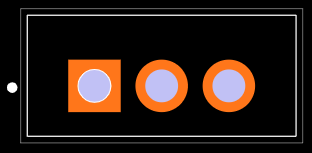
3D Model
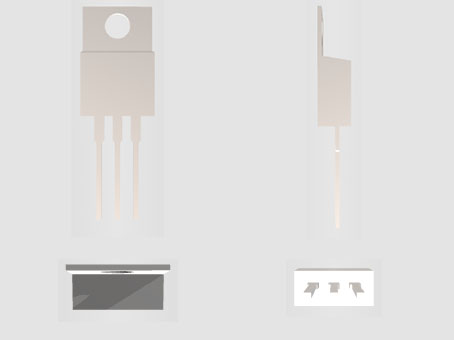
TL783 Features
• 700-mA Output Current
• 76-dB Typical Ripple Rejection
• 0.15% Typical Output Voltage Regulation
• 0.001%/V Typical Input Voltage Regulation
• Full Short-Circuit, Safe-Operating-Area, and Thermal-Shutdown Protection
• Output Adjustable From 1.25 V to 125 V When Thermal-Shutdown Protection Used With an External Resistor Divider
Specifications
- TypeParameter
- Mount
In electronic components, the term "Mount" typically refers to the method or process of physically attaching or fixing a component onto a circuit board or other electronic device. This can involve soldering, adhesive bonding, or other techniques to secure the component in place. The mounting process is crucial for ensuring proper electrical connections and mechanical stability within the electronic system. Different components may have specific mounting requirements based on their size, shape, and function, and manufacturers provide guidelines for proper mounting procedures to ensure optimal performance and reliability of the electronic device.
Through Hole - Package / Case
refers to the protective housing that encases an electronic component, providing mechanical support, electrical connections, and thermal management.
TO-220 - Number of Pins220
- Packaging
Semiconductor package is a carrier / shell used to contain and cover one or more semiconductor components or integrated circuits. The material of the shell can be metal, plastic, glass or ceramic.
Rail/Tube - Pbfree Code
The "Pbfree Code" parameter in electronic components refers to the code or marking used to indicate that the component is lead-free. Lead (Pb) is a toxic substance that has been widely used in electronic components for many years, but due to environmental concerns, there has been a shift towards lead-free alternatives. The Pbfree Code helps manufacturers and users easily identify components that do not contain lead, ensuring compliance with regulations and promoting environmentally friendly practices. It is important to pay attention to the Pbfree Code when selecting electronic components to ensure they meet the necessary requirements for lead-free applications.
no - Number of Terminations3
- ECCN Code
An ECCN (Export Control Classification Number) is an alphanumeric code used by the U.S. Bureau of Industry and Security to identify and categorize electronic components and other dual-use items that may require an export license based on their technical characteristics and potential for military use.
EAR99 - Max Operating Temperature
The Maximum Operating Temperature is the maximum body temperature at which the thermistor is designed to operate for extended periods of time with acceptable stability of its electrical characteristics.
125°C - Min Operating Temperature
The "Min Operating Temperature" parameter in electronic components refers to the lowest temperature at which the component is designed to operate effectively and reliably. This parameter is crucial for ensuring the proper functioning and longevity of the component, as operating below this temperature may lead to performance issues or even damage. Manufacturers specify the minimum operating temperature to provide guidance to users on the environmental conditions in which the component can safely operate. It is important to adhere to this parameter to prevent malfunctions and ensure the overall reliability of the electronic system.
0°C - Terminal Position
In electronic components, the term "Terminal Position" refers to the physical location of the connection points on the component where external electrical connections can be made. These connection points, known as terminals, are typically used to attach wires, leads, or other components to the main body of the electronic component. The terminal position is important for ensuring proper connectivity and functionality of the component within a circuit. It is often specified in technical datasheets or component specifications to help designers and engineers understand how to properly integrate the component into their circuit designs.
SINGLE - Peak Reflow Temperature (Cel)
Peak Reflow Temperature (Cel) is a parameter that specifies the maximum temperature at which an electronic component can be exposed during the reflow soldering process. Reflow soldering is a common method used to attach electronic components to a circuit board. The Peak Reflow Temperature is crucial because it ensures that the component is not damaged or degraded during the soldering process. Exceeding the specified Peak Reflow Temperature can lead to issues such as component failure, reduced performance, or even permanent damage to the component. It is important for manufacturers and assemblers to adhere to the recommended Peak Reflow Temperature to ensure the reliability and functionality of the electronic components.
NOT SPECIFIED - Number of Functions1
- Terminal Pitch
The center distance from one pole to the next.
2.54mm - Time@Peak Reflow Temperature-Max (s)
Time@Peak Reflow Temperature-Max (s) refers to the maximum duration that an electronic component can be exposed to the peak reflow temperature during the soldering process, which is crucial for ensuring reliable solder joint formation without damaging the component.
NOT SPECIFIED - Pin Count
a count of all of the component leads (or pins)
3 - JESD-30 Code
JESD-30 Code refers to a standardized descriptive designation system established by JEDEC for semiconductor-device packages. This system provides a systematic method for generating designators that convey essential information about the package's physical characteristics, such as size and shape, which aids in component identification and selection. By using JESD-30 codes, manufacturers and engineers can ensure consistency and clarity in the specification of semiconductor packages across various applications and industries.
R-PSFM-T3 - Number of Outputs1
- Qualification Status
An indicator of formal certification of qualifications.
Not Qualified - Output Type
The "Output Type" parameter in electronic components refers to the type of signal or data that is produced by the component as an output. This parameter specifies the nature of the output signal, such as analog or digital, and can also include details about the voltage levels, current levels, frequency, and other characteristics of the output signal. Understanding the output type of a component is crucial for ensuring compatibility with other components in a circuit or system, as well as for determining how the output signal can be utilized or processed further. In summary, the output type parameter provides essential information about the nature of the signal that is generated by the electronic component as its output.
Adjustable - Polarity
In electronic components, polarity refers to the orientation or direction in which the component must be connected in a circuit to function properly. Components such as diodes, capacitors, and LEDs have polarity markings to indicate which terminal should be connected to the positive or negative side of the circuit. Connecting a component with incorrect polarity can lead to malfunction or damage. It is important to pay attention to polarity markings and follow the manufacturer's instructions to ensure proper operation of electronic components.
Positive - Quiescent Current
The quiescent current is defined as the current level in the amplifier when it is producing an output of zero.
15mA - Max Output Voltage
The maximum output voltage refers to the dynamic area beyond which the output is saturated in the positive or negative direction, and is limited according to the load resistance value.
125V - Voltage - Output
Voltage - Output is a parameter that refers to the electrical potential difference between the output terminal or pin of an electronic component and a reference point, typically ground. It indicates the level of voltage that the component is capable of providing at its output under specified operating conditions. This parameter is crucial in determining the performance and functionality of the component in a circuit, as it directly affects the signal or power being delivered to other components or devices connected to the output. Engineers and designers use the voltage output specification to ensure compatibility and proper functioning of the component within the overall system.
125V - Min Input Voltage
The parameter "Min Input Voltage" in electronic components refers to the minimum voltage level that must be applied to the component for it to operate within its specified parameters. This value is crucial as providing a voltage below this minimum threshold may result in the component malfunctioning or not functioning at all. It is important to adhere to the specified minimum input voltage to ensure the proper operation and longevity of the electronic component. Failure to meet this requirement may lead to potential damage to the component or the overall system in which it is used.
21.5V - Max Input Voltage
Max Input Voltage refers to the maximum voltage level that an electronic component can safely handle without getting damaged. This parameter is crucial for ensuring the proper functioning and longevity of the component. Exceeding the specified maximum input voltage can lead to overheating, electrical breakdown, or permanent damage to the component. It is important to carefully adhere to the manufacturer's guidelines regarding the maximum input voltage to prevent any potential issues and maintain the reliability of the electronic device.
150V - Dropout Voltage
Dropout voltage is the input-to-output differential voltage at which the circuit ceases to regulate against further reductions in input voltage; this point occurs when the input voltage approaches the output voltage.
10V - Min Output Voltage
Min Output Voltage refers to the lowest voltage level that an electronic component, such as a voltage regulator or power supply, can provide reliably under specified conditions. It indicates the minimum threshold required for proper operation of connected devices. Operating below this voltage may lead to device malfunction or failure to operate as intended.
1.25V - Min Current Limit
Min Current Limit is a parameter in electronic components that refers to the minimum amount of current that must flow through the component to ensure proper operation. This parameter is important because if the current falls below this limit, the component may not function as intended or may even be damaged. Manufacturers specify the minimum current limit to help users understand the operating conditions and limitations of the component. It is crucial to ensure that the current flowing through the component remains above the specified minimum limit to maintain its performance and reliability.
700mA - Line Regulation-Max (%/V)
Line regulation refers to the ability of an electronic component, such as a voltage regulator, to maintain a stable output voltage despite variations in the input voltage. The parameter "Line Regulation-Max (%/V)" specifies the maximum percentage change in the output voltage for a given change in the input voltage. For example, if the Line Regulation-Max is 0.1%/V, it means that the output voltage will change by a maximum of 0.1% for every 1V change in the input voltage. A lower value for Line Regulation-Max indicates better performance and stability of the component in maintaining a consistent output voltage under varying input conditions. It is an important parameter to consider when designing or selecting electronic components for applications where voltage stability is critical.
0.02 - Input-Output Voltage Differential-Min
Input-Output Voltage Differential-Min refers to the minimum voltage difference required between the input and output terminals of an electronic component, typically in devices like operational amplifiers or voltage regulators. This parameter is crucial for ensuring proper operation and performance of the component, as falling below this threshold can result in malfunction or degraded performance. It defines the minimum level of voltage that must be maintained to ensure that the device operates within its specified parameters.
20V - RoHS Status
RoHS means “Restriction of Certain Hazardous Substances” in the “Hazardous Substances Directive” in electrical and electronic equipment.
RoHS Compliant - Lead Free
Lead Free is a term used to describe electronic components that do not contain lead as part of their composition. Lead is a toxic material that can have harmful effects on human health and the environment, so the electronics industry has been moving towards lead-free components to reduce these risks. Lead-free components are typically made using alternative materials such as silver, copper, and tin. Manufacturers must comply with regulations such as the Restriction of Hazardous Substances (RoHS) directive to ensure that their products are lead-free and environmentally friendly.
Contains Lead
TL783 Functional Block Diagram

TL783 Layout Example

TL783 Applications
★Printers
★Electronic Point of Sale
★Applications and White Goods
★Medical, Health, and Fitness Applications
TL783 Package

TL783 Manufacturer
Texas Instruments (TI) is an American technology company headquartered in Dallas, Texas, which designs and manufactures semiconductors and various integrated circuits, and sells them to electronic designers and manufacturers worldwide. It is one of the top 10 semiconductor companies in global sales. The company focuses on the development of analog chips and embedded processors, which account for more than 80% of its revenue. TI also produces TI digital light processing technology and educational technology products, including calculators, microcontrollers and multi-core processors. As of 2016, the company has 45,000 patents worldwide.
Trend Analysis
Datasheet PDF
- Datasheets :
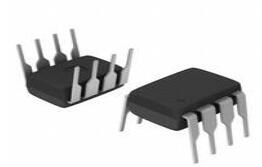 PIC12F508 Microcontroller: Datasheet, Programming, Block Diagram
PIC12F508 Microcontroller: Datasheet, Programming, Block Diagram13 October 20215337
 1N4002 Diode: Pinout, Datasheet, and Equivalents
1N4002 Diode: Pinout, Datasheet, and Equivalents04 August 202111744
 Cypress CY8C4024LQI-S401: A Comprehensive Technical Overview
Cypress CY8C4024LQI-S401: A Comprehensive Technical Overview29 February 202485
 NRF24L01P Transceiver: Datasheet, Pinout and Applications
NRF24L01P Transceiver: Datasheet, Pinout and Applications14 August 20212688
 ESP32: a successor to the ESP8266 microcontroller
ESP32: a successor to the ESP8266 microcontroller21 February 20223753
![SA15 TVS DIODE 15VWM 24.4VC DO15[FAQ]: Datasheet, Features, and Applications](https://res.utmel.com/Images/Article/842c249e-4640-4601-b47d-33a2290d80f7.jpg) SA15 TVS DIODE 15VWM 24.4VC DO15[FAQ]: Datasheet, Features, and Applications
SA15 TVS DIODE 15VWM 24.4VC DO15[FAQ]: Datasheet, Features, and Applications09 March 2022348
 TL082 JFET Dual Op-Amp: Where & How to Use TL082?
TL082 JFET Dual Op-Amp: Where & How to Use TL082?08 December 202111402
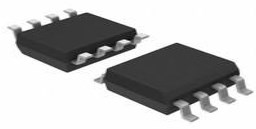 LM1458 Dual Op-Amp : Pinout, Applications and Datasheet
LM1458 Dual Op-Amp : Pinout, Applications and Datasheet10 August 20212860
 A Guide to Selecting the Ideal Microphone for Your Audio Needs
A Guide to Selecting the Ideal Microphone for Your Audio Needs15 May 20231984
 What is Metaverse?
What is Metaverse?09 October 20212657
 Why is 50 ohms?
Why is 50 ohms?13 June 20228640
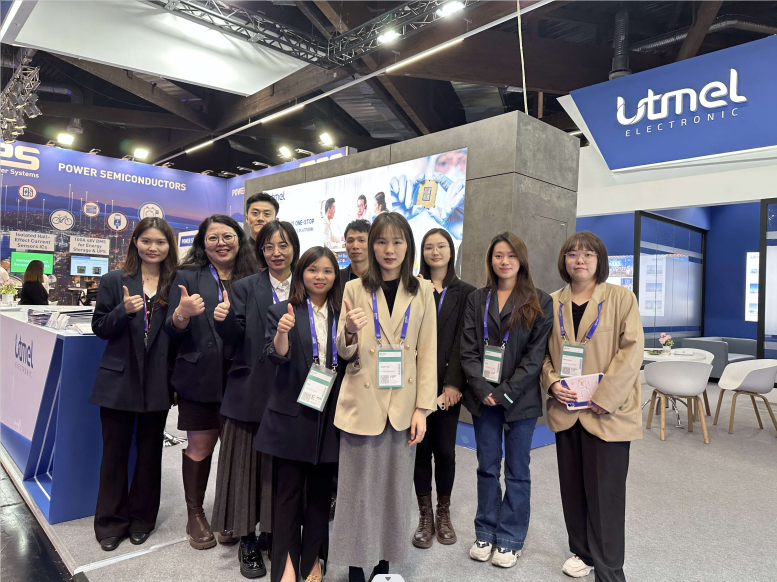 Utmel, China's Leading Overseas Component Distributor, at PCIM Europe 2023
Utmel, China's Leading Overseas Component Distributor, at PCIM Europe 202310 November 20235888
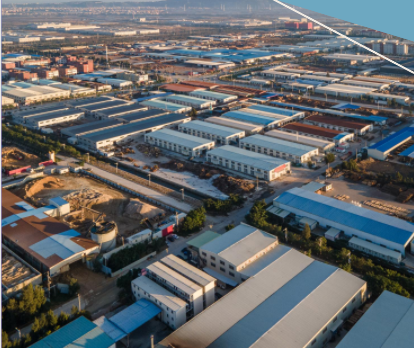 Amkor Technology to Invest $2 Billion in Semiconductor Testing Plant in Peoria, Creating 2,000 Jobs
Amkor Technology to Invest $2 Billion in Semiconductor Testing Plant in Peoria, Creating 2,000 Jobs11 December 20232467
 An Overview of Fiber Optic Cable
An Overview of Fiber Optic Cable10 August 20214677
 Exploring SPI Communication for Faster Data Transfer
Exploring SPI Communication for Faster Data Transfer20 June 2025411
 UMD Receives $2M NSF Grant for Advancement of Semiconductor Technology and Workforce Training
UMD Receives $2M NSF Grant for Advancement of Semiconductor Technology and Workforce Training27 September 20231959
Texas Instruments
In Stock: 124
United States
China
Canada
Japan
Russia
Germany
United Kingdom
Singapore
Italy
Hong Kong(China)
Taiwan(China)
France
Korea
Mexico
Netherlands
Malaysia
Austria
Spain
Switzerland
Poland
Thailand
Vietnam
India
United Arab Emirates
Afghanistan
Åland Islands
Albania
Algeria
American Samoa
Andorra
Angola
Anguilla
Antigua & Barbuda
Argentina
Armenia
Aruba
Australia
Azerbaijan
Bahamas
Bahrain
Bangladesh
Barbados
Belarus
Belgium
Belize
Benin
Bermuda
Bhutan
Bolivia
Bonaire, Sint Eustatius and Saba
Bosnia & Herzegovina
Botswana
Brazil
British Indian Ocean Territory
British Virgin Islands
Brunei
Bulgaria
Burkina Faso
Burundi
Cabo Verde
Cambodia
Cameroon
Cayman Islands
Central African Republic
Chad
Chile
Christmas Island
Cocos (Keeling) Islands
Colombia
Comoros
Congo
Congo (DRC)
Cook Islands
Costa Rica
Côte d’Ivoire
Croatia
Cuba
Curaçao
Cyprus
Czechia
Denmark
Djibouti
Dominica
Dominican Republic
Ecuador
Egypt
El Salvador
Equatorial Guinea
Eritrea
Estonia
Eswatini
Ethiopia
Falkland Islands
Faroe Islands
Fiji
Finland
French Guiana
French Polynesia
Gabon
Gambia
Georgia
Ghana
Gibraltar
Greece
Greenland
Grenada
Guadeloupe
Guam
Guatemala
Guernsey
Guinea
Guinea-Bissau
Guyana
Haiti
Honduras
Hungary
Iceland
Indonesia
Iran
Iraq
Ireland
Isle of Man
Israel
Jamaica
Jersey
Jordan
Kazakhstan
Kenya
Kiribati
Kosovo
Kuwait
Kyrgyzstan
Laos
Latvia
Lebanon
Lesotho
Liberia
Libya
Liechtenstein
Lithuania
Luxembourg
Macao(China)
Madagascar
Malawi
Maldives
Mali
Malta
Marshall Islands
Martinique
Mauritania
Mauritius
Mayotte
Micronesia
Moldova
Monaco
Mongolia
Montenegro
Montserrat
Morocco
Mozambique
Myanmar
Namibia
Nauru
Nepal
New Caledonia
New Zealand
Nicaragua
Niger
Nigeria
Niue
Norfolk Island
North Korea
North Macedonia
Northern Mariana Islands
Norway
Oman
Pakistan
Palau
Palestinian Authority
Panama
Papua New Guinea
Paraguay
Peru
Philippines
Pitcairn Islands
Portugal
Puerto Rico
Qatar
Réunion
Romania
Rwanda
Samoa
San Marino
São Tomé & Príncipe
Saudi Arabia
Senegal
Serbia
Seychelles
Sierra Leone
Sint Maarten
Slovakia
Slovenia
Solomon Islands
Somalia
South Africa
South Sudan
Sri Lanka
St Helena, Ascension, Tristan da Cunha
St. Barthélemy
St. Kitts & Nevis
St. Lucia
St. Martin
St. Pierre & Miquelon
St. Vincent & Grenadines
Sudan
Suriname
Svalbard & Jan Mayen
Sweden
Syria
Tajikistan
Tanzania
Timor-Leste
Togo
Tokelau
Tonga
Trinidad & Tobago
Tunisia
Turkey
Turkmenistan
Turks & Caicos Islands
Tuvalu
U.S. Outlying Islands
U.S. Virgin Islands
Uganda
Ukraine
Uruguay
Uzbekistan
Vanuatu
Vatican City
Venezuela
Wallis & Futuna
Yemen
Zambia
Zimbabwe



















